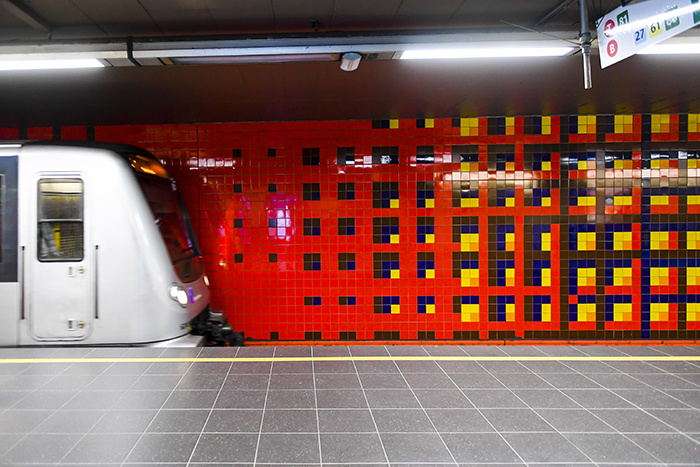1976/1997
This work is a striking example of how painting can be included in an environment. This integrated work of art is one hundred metres long and was put together using ordinary smooth ceramic tiles. It had to meet very strict requirements: inexpensive material that was easy to put in place, resistant and easy to clean. On the platform in the direction of the suburbs, the colours which are arranged in series enable passengers to identify the course of the movement, following a vertical plane or an oblique plane. On the platform in the direction of the city centre, there are five double squares distributed over the whole wall. “Carrelage Cinq” was designed in yellow, orange, red, brown and blue. From a very simple monochrome surface, from which the observer can easily observe the whole work, each of the five parts of the composition develop a greater visual and structural complexity and more lively mobility in terms of colour.
List of links
JEAN GLIBERT (Brussels, 1938)
Jean Glibert trained at the monumental painting workshop under Paul Delvaux. He is interested in the problem of integrating colour into architecture, the atmosphere and through the use – as far as possible – of techniques used in building work. According to him, colour can create a new emphasis using existing shapes, and can have a rhythmic effect or establish links. He has also researched transparency (stained glass windows) and the use of spatial arrangements, particularly via the chair that he was offered by the Ecole Nationale Supérieure de La Cambre. Jean Glibert has an experimental touch. He has painted signs on a car park using a spray gun and has had several commissions for banks and schools. Together with Norberte Loicq, he laid down 3,000 coloured tiles in cement in Antwerp’s Middelheim park for the sixteenth biennial.
PICTURE

 Twitter
Twitter